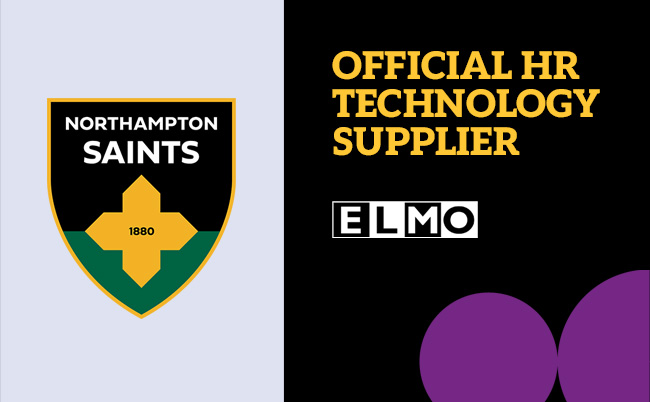Improve Your Onboarding Experience With These Three Steps
The onboarding process is an organisation’s first real chance to make a lasting impression on new recruits. And in todays’ talent-tight market, the risk of losing a new hire to a poor onboarding experience should be top of mind for HR professionals.

Onboarding is an organisation’s first real chance to make a lasting impression on new recruits. And in today’s talent-tight market, the risk of losing a new hire to a poor onboarding experience should be top of mind for HR professionals.
The last thing an employer wants is to go through the time and expense of hiring a new employee, only to see them leave just weeks after joining. Over time, this can have a real impact on the company culture.
Why is onboarding so important?
According to Forbes, 81% of employees felt overwhelmed at some point during an onboarding process. At the same time, 63% of workers consider leaving their roles within 2 years of employment, if they’re not thriving in their positions. The stakes in these first weeks are clearly high and it’s important that HR teams can ensure they run smoothly.
Onboarding is one of the first experiences a new hire has with your company. Even if the recruitment process has gone as smoothly as possible, your new starter may form serious impressions about the company based on the experience. That’s why it’s imperative to ensure your onboarding process can reassure employees that they’ve made the right choice.
With all this in mind, here are three steps HR leaders can take to rethink the onboarding process and make it easier to engage with new hires, even in a hybrid workplace.
Step #1: Create a consistent experience
The first and most important step is to ensure you can provide new starters with a formal introduction to the company.
That process should be consistent across all new hires, whether they are being onboarded virtually or in-person. Without this, it can be difficult for a new starter to gain clarity on their new role and opportunities for future growth.
So what does this experience involve?
- Automatically provisioning IT and software licences.
- Scheduling intro calls with managers and relevant stakeholders.
- Training courses for compliance, health and safety, company processes and more.
- Setting performance targets and clear expectations for the first few days, weeks and months.
- Regular check-ins with line managers to monitor progress.
Some of this can come directly from the HR team – and at other points, you’ll need to work with the new recruit’s line manager to align calendars, expectations and goals. Nonetheless, it’s the job of the HR team to ensure this onboarding experience is given to a high standard and in a consistent way for each employee.
Technology can also be used to enhance the new hire experience while accelerating tasks for the managers and HR teams that oversee the process. An online process that includes visual workflows, accessible and interactive resources and personalised information can drastically improve new employee engagement.
Step #2: Personalise the journey
This might seem like a contradiction to step one, but it’s equally important to engage with new hires on a personal level. Although the experience should be consistent in quality across the organisation, there are ways to introduce a degree of personalisation that will help to make new recruits feel valued and make the process relevant to their role. Such options could include:
- Providing training resources that are relevant to their role and experience.
- Offering recruits the option to onboard virtually or in-person, depending on your remote working policies.
- Creating personalised targets, in collaboration with line managers and the employee’s own career goals.
- Offering diverse training resources to choose from, such as articles, videos, guided training courses and more.
Read more: 7 Benefits of Talent Management Systems for Businesses
Crucially, this should come alongside certain processes and workflows that will be the same for every employee, including company-mandated compliance and security training.
It’s the role of the HR team, therefore, to define what aspects can be personalised and which need to be standardised. For the former, you’ll need to work closely with line managers and employees themselves. For the latter, you need to clearly define which onboarding tasks need to be completed, how and by when.
Technology can help to personalise the experience without adding a huge amount of time and effort for your HR team.
Step #3: Emphasise company culture
One of the top challenges for new recruits is to effectively integrate into both their immediate team and the wider company culture. This is particularly the case for those joining remotely. That being said, there are many ways to make this easier, especially with the right technology and tools.
It’s important for HR teams and managers to ensure that new hires aren’t too isolated and that they have a chance to interact with employees across the company. Done right, this should help contribute to an overall sense of belonging. Here are some effective ways to achieve that:
- Company-wide meet-ups or team-building exercises, either in-person or remotely.
- Social events for the new starter’s immediate team, so they can get to know each other in the first few weeks.
- Offering a ‘buddy’ system, where the new employee is matched with somebody from another team.
- Encouraging experienced employees to host training sessions for new or junior colleagues.
- Mandating regular 1:1s between employees and their managers, ensuring there is frequent space to discuss both immediate performance targets and long-term career goals.
These options can help new recruits feel more connected and supported, helping solidify the positive first impression you need to make in these crucial first few weeks.
First impressions count
There has never been a more important time to use onboarding as an opportunity to retain talented employees and assure them that they’ve made the right decision by joining your organisation.
With the right technology, building consistency, personalisation and culture into your onboarding process doesn’t have to be hard. That’s where ELMO Onboarding comes in.
Here’s how it works:
- Reduce time to productivity – By automatically provisioning IT licences and learning materials, you can ensure employees have the tools they need to succeed from day one.
- Streamline essential onboarding tasks – With ELMO, you can create customised onboarding workflows that can be completed in the same way, every time. This can include assigning due dates for tasks and documents, sending reminder emails and requesting approval from stakeholders. This lets you balance personalised and standardised tasks without excessive or inefficient admin.
- A bird’s eye view over onboarding – Generate clear and detailed reports that can track the new recruit’s progress through check-ins, meetings and training courses. This means HR teams don’t need to send excessive emails and messages to understand if and when tasks have been completed.
Find out more about how you can leverage technology to transform your with employee experience with ELMO Onboarding.
 HR Core
HR Core 









